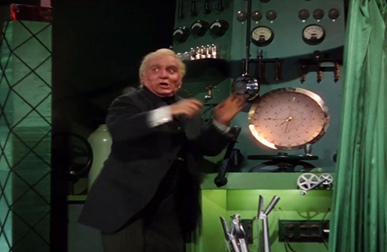Why I'm Voting for the Government in the Election

This week I attended an event where landscape & architecture practitioners talked about ‘how practices [are] designing with Country’.
A leading architect said something to the effect of:
‘I think now we’re less interested in the signature of the architect being expressed in the project, now it’s less about ego and more about service, about being led by communities. We have a set of professional technical skills that we can use to facilitate the delivery of a community’s vision.’
(paraphrased)
I see this rhetorical posture in the design professions a lot. Confronted with the alarming idea that they may be asked to account for their exercise of power, practitioners put forward a model for their role that conveniently makes it look like they have no power at all, that obfuscates their power, that hides their power away behind the communities a project is for in an attempt to conceal it from view.
Joan Didion quoted the Great Gatsby in her incredible essay On Self-Respect:
‘It takes two people to make an accident’
It also takes two people to make a dialogue.
-
Another consensus view of the panel, it seemed to me, was something to the effect of:
‘In the 20th century designers were obsessed with formal attributes of a project, with how a thing looked. Today we’re interested in what a project does for communities, how it empowers them.’
A soft rebuttal to this could be to gently suggest that perhaps aesthetics and performance are not necessarily entirely discreet and irreconcilable aspects of a built thing in the world.
A more forceful critique would be to highlight that it’s convenient for the designer to shift focus away from their own creative expression when they’re called on to account for it.
I believe, as Beth Meyer puts so clearly, that
‘beauty performs’
I don’t buy this cleaving of technical skill from creative expressions, especially in a circumstance where it’s such a neat and convenient distinction to introduce.
If, through a pay no attention to the man behind the curtain performance of false modesty, we make a show of carving out creative expression and handing it over exclusively to the people we’re designing for, where does that leave us? Do we become a tool? A glove? A mallet? In this case how are we possibly held to account? Surely there are few things more dangerous than a group of people at once invested with the capacity to exercise power but at the same time apparently divested of any independent accountability for outcomes?
Don’t get me wrong, I’m not out here looking to champion the god given right of the designer to do whatever they want. What I want to point out is what I was taught in design school and what I still believe: That our skills lie in creatively shepherding big, beautiful things through the pressure cooker pipeline of regulation, community tension, consultant differences, and material constraints without having them fall apart. This is something we’re very good at, this is our job.
Of course, those serious about progress seek to serve the communities they design for, community service, in its fullest sense, is what the design professions, at their best, do. But those serious about progress are also honest and open about where their power lies: they know how to build big beautiful things and they know that to keep things beautiful requires creative expression on their part. They don’t obfuscate, they don’t hide away: they exercise power with care and joy in full knowledge that they’ll exercise it imperfectly and be held to account for that. They offer themselves over to processes bigger than themselves.